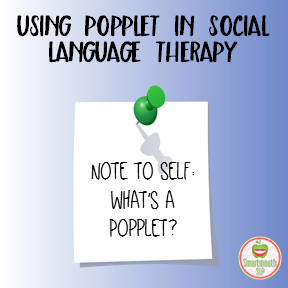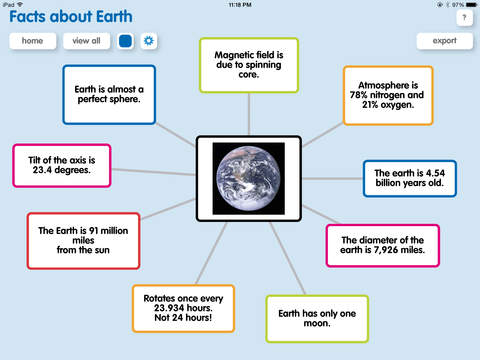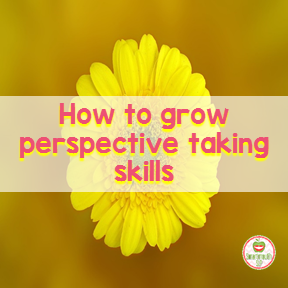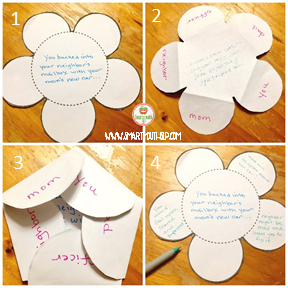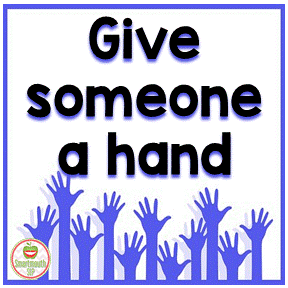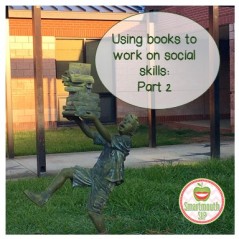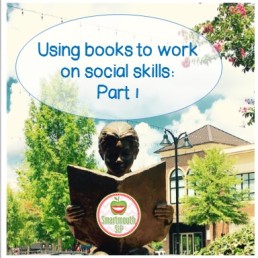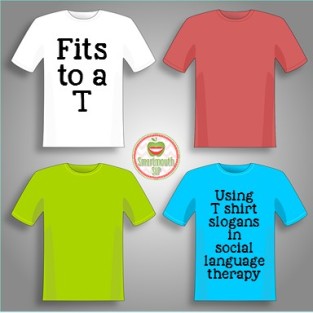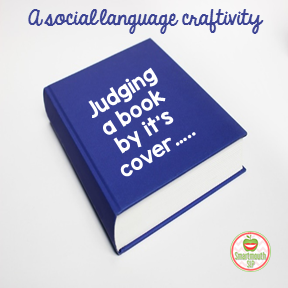
We have all heard the old adage, “Never judge a book by it’s cover.” This gratefully comes to mind each time I run into someone I know when I am in my grubbiest attire with no makeup on! This is also a social concept that we work on to talk about how our appearance on the outside doesn’t always match what we have on the inside of us! This is a pretty challenging concept cognitively and it is not a once and done lesson.
This discussion can lead to the related concepts of how we want others to see and think about us, why our words and actions matter, and how we need to be thinking of others as well. These topics can open up painful and difficult discussions, so don’t be tied to your lesson plan. Instead, take these teachable moments and go deep with your students, especially in the middle school years. I know it teeters on the edge of counseling in social language groups, but these concepts are rough waters that our kids need to talk about in a safe place, with someone they trust.
One activity that you may want to try to illustrate these social concepts is to make an actual book cover (hello literal interpretation!). I grabbed some old books at Goodwill and use the original jackets to help the students make a prediction or good guess about what the book might be about, to introduce our activity. We then make our own book jackets to represent ourselves. You can go old school and use a paper grocery bag, use legal size paper to make into a book jacket or even craft paper to make a template using an actual book jacket. I picked up some composition notebooks for next to nothing to use and they double as a journal for my students too! I found this great visual tutorial on Pinterest from Terri Mauro, or you can order these paper jackets on Amazon, if you only need a few and are a little type A, with mad SLP money to burn.
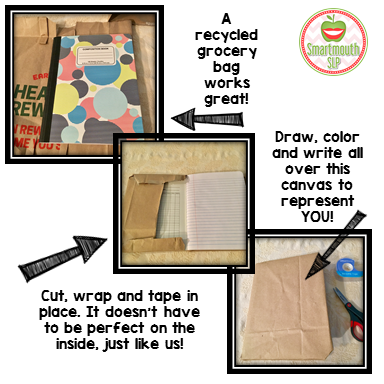
Next, we brainstorm ideas of how we want to be seen. There are so many related concepts and activities, you may have your social lesson plans for an entire month! What do we want others to see when they are around us? Those words and images are then illustrated (or glued, painted, written) on the book cover by each student.
It will be interesting to see if they would choose the same words and pictures at the end of the year versus the beginning. The beauty of this concept is that you can totally change the cover anytime you want! These covers are also great illustrations to use throughout the school year to address different social topics (perspective taking, judging others, how I make people think and feel, etc..). So maybe we can’t judge a book by it’s cover, but we can sure learn a lot about ourselves by it!
